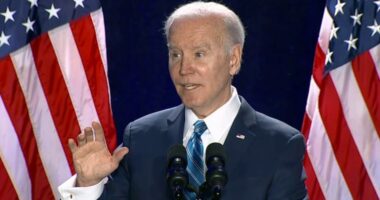
The February jobs report is likely to do little to alter the Federal Reserve’s plans to raise interest rates in two weeks, but a continued run of strong hiring points to further increases in borrowing costs this spring.
Employers added 678,000 jobs in February, and the unemployment rate declined to 3.8%, the lowest level since the coronavirus pandemic hit the U.S. economy two years ago, the Labor Department reported on Friday. Average hourly earnings were flat in February compared with January and rose by 5.1% from a year earlier.
The report shows how very strong demand for labor persisted despite the surge in infections due to the Omicron variant of the coronavirus this winter. Hiring figures were revised higher than initially reported for December and January by a combined 92,000 jobs.
Fed Chairman Jerome Powell told lawmakers this week that before last week’s invasion of Ukraine, he had expected the Fed would begin to raise rates at its March 15-16 meeting and to follow that increase with several more this year.
“For now, I would say that we will proceed carefully along the lines of that plan,” he said Wednesday. Mr. Powell said, “I’m inclined to propose and support a [quarter-percentage] point hike” at the Fed’s meeting in two weeks.
Mr. Powell accelerated the Fed’s plans to remove stimulus and begin raising rates at the end of last year, largely because of growing evidence of rapid tightening in the labor market. Mr. Powell on Thursday said that a historically elevated level of job opening was a sign of “an overheated labor market.”
Mr. Powell effectively ended a debate in markets and among other Fed officials over whether they would lift rates from zero this month with a larger half-percentage-point increase. At the same time, he laid the groundwork for the possibility of half-point increases this summer, pushing back against the idea that more traditional quarter-point increases represent a speed limit for the Fed.
The war in Ukraine poses a significant wild card. It is likely to push up food and energy prices, including for gasoline, which fuels inflation that is already running at a four-decade high. At the same time, it could reduce financial risk-taking, investment and spending.
“It’s hard to say what the effects on both supply and demand will be, and I would just echo that we need to be alert and nimble as we make decisions in what is quite a difficult environment,” Mr. Powell said Thursday.
Write to Nick Timiraos at [email protected]
Copyright ©2022 Dow Jones & Company, Inc. All Rights Reserved. 87990cbe856818d5eddac44c7b1cdeb8









